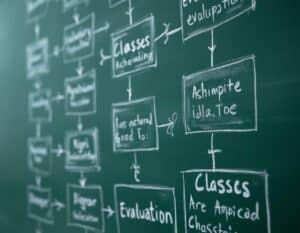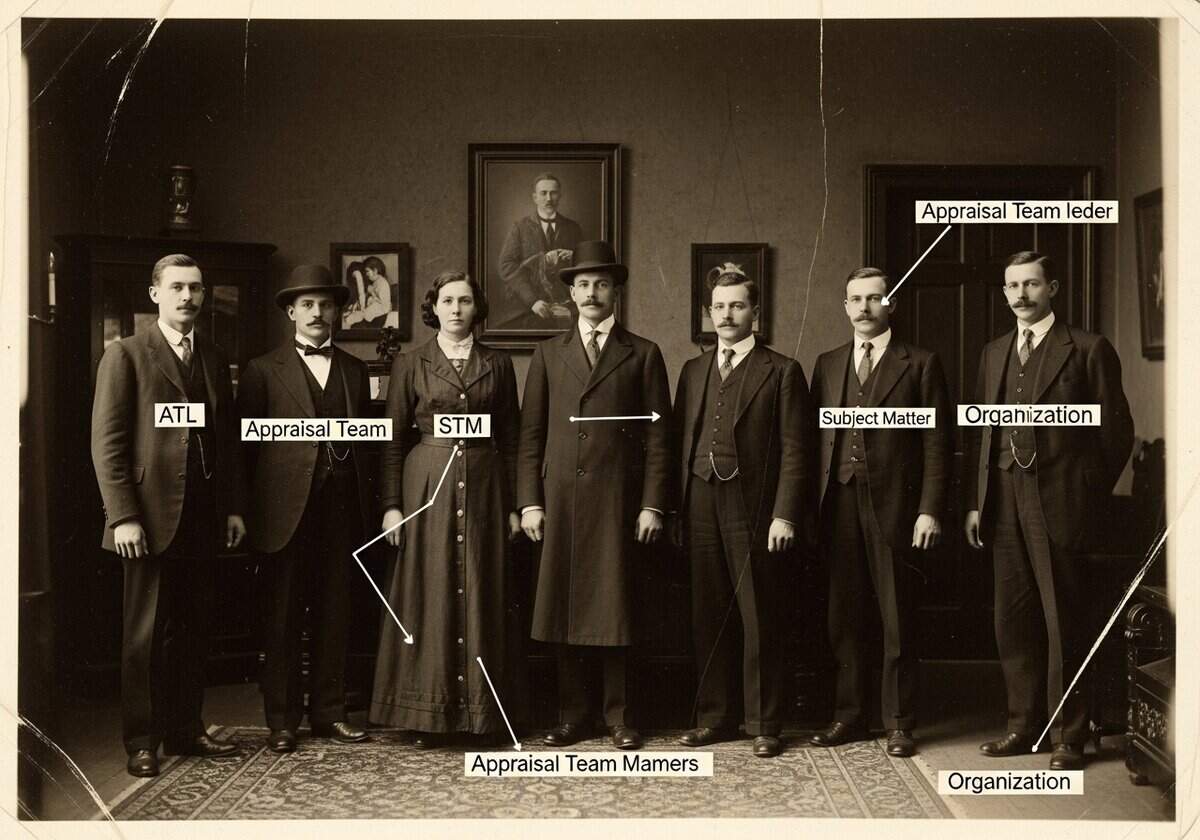The SCAMPI methodology, or Standard CMMI Appraisal Method for Process Improvement, is the method in enhancing organizational capabilities through rigorous evaluation and continuous improvement. According to the Carnegie Mellon Software Engineering Institute, organizations that implement CMMI frameworks experience a 35% improvement in process performance over time, demonstrating the tangible benefits of structured appraisal processes. This article thoroughly explores the SCAMPI framework, detailing its objectives, classification of appraisal types (Classes A, B, and C), the key phases involved in the SCAMPI appraisal process, and the essential roles required for effective evaluations.
Key Takeaways

- SCAMPI provides a structured approach for process improvement.
- Evaluation identifies strengths and weaknesses of processes.
- Three classes (A, B, C) define assessment rigor.
- Key phases include preparation, execution, and reporting.
- Lead appraisers guide the appraisal teams efficiently.
- Promotes organizational maturity across various sectors.
Definition of SCAMPI and its Framework
SCAMPI, which stands for Standard CMMI Appraisal Method for Process Improvement, is a structured assessment approach designed to evaluate and enhance process capability within organizations. It is rooted in the Capability Maturity Model Integration (CMMI), a proven framework used for process improvement in software engineering and systems engineering.
The SCAMPI methodology facilitates organizations in identifying strengths and areas needing enhancement by conducting thorough evaluations that align with predefined maturity levels, which range from Level 1 (Initial) to Level 5 (Optimizing).
The detailed CMMI Framework can be found here (recommended before this detailed SCAMPI):
The SCAMPI framework comprises various components, including appraisal protocols, guidelines, and a set of objectives that drive the evaluation process. Within this framework, three classes of appraisals are distinctly identified, an organization being able to choose a specific class based on its goals, size, and specific industry requirements:
- Class A provides the most rigorous assessment, involving comprehensive data collection and analysis
- Classes B and C offer varying degrees of depth and focus.
Additionally, the methodology serves as a mechanism for ensuring compliance with industry standards and government regulations. Organizations involved in defense contracting or quality assurance must adhere to strict guidelines, making SCAMPI crucial in demonstrating accountability and reliability. Appraisals can uncover areas needing corrective actions, enabling organizations to maintain compliance while improving their operational readiness.
Tip: organizations should integrate SCAMPI objectives into their strategic planning to ensure alignment between resource allocation and process improvement initiatives. This alignment can lead to optimized investments in training and technology, further amplifying the impact of the SCAMPI methodology in details across all levels of the organization.
SCAMPI Classes and Their Specific Applications
SCAMPI (Standard CMMI Appraisal Method for Process Improvement) exists in three distinct classes, each designed to serve different appraisal needs and contexts.
- Class A appraisals: are the most comprehensive, requiring a full evaluation of an organization’s processes against the CMMI model. This class is utilized to assess an organization’s capability for achieving maturity levels and is critical for large-scale projects where compliance and risk management are paramount. For instance, a defense contractor may undergo a Class A appraisal to ensure that their processes meet strict DOD standards for program management, leading to improved project success rates and reduced life-cycle costs. Typical total duration: 6-8 weeks.
- Class B appraisals: offer an intermediate approach, typically conducted with less rigor than Class A. This class is suitable for organizations looking to gain insight into their process strengths and weaknesses without committing to a full assessment. The findings can guide targeted improvements, which can lead to an increase in both efficiency and customer satisfaction. Typical total duration: 4-6 weeks.
- Class C appraisals: are the least formal and are commonly used for internal assessments or benchmarking against industry standards. They help organizations identify process areas needing improvement without the associated costs of higher classes. Frequently, small businesses adopt this class to establish foundational practices that support future growth. A notable benefit is that Class C appraisals can reveal quick wins in process improvement, enabling rapid feedback loops for ongoing enhancement. Typical total duration: 2-4 weeks.
The choice among these classes depends on several factors including organizational goals, current maturity level, and regulatory requirements. Organizations might consider utilizing a Class A for formal recognition by external stakeholders, while opting for Class B or C for internal audits or pilot projects.
The SCAMPI Appraisal Process
Essential Roles in the SCAMPI Evaluation
| The SCAMPI evaluation process relies on various roles that align to ensure an effective appraisal of an organization’s process maturity: |  |
| The Appraisal Team Leader (ATL): directs the overall evaluation, functioning as a mediator between the organization and the SCAMPI team. The ATL must possess extensive experience in appraisal methodologies and should ideally have completed related training. A successful ATL streamlines communication, coordinates schedules, and ensures that all team members possess the necessary skills to perform their roles efficiently. | The Appraisal Team Members (ATMs): who perform several tasks, including data collection, document review, and observation during interviews. ATMs bring subject matter expertise in specific domains, which is crucial for making informed judgments about the organization’s practices. These members are also responsible for verifying that evidence aligns with appraisal criteria laid out in the SCAMPI methodology in details. |
| Subject Matter Experts (SMEs): also play a significant part in the SCAMPI evaluation, providing targeted insights into areas such as technical practices, risk management, and quality assurance. SMEs enhance the appraisal accuracy, ensuring that findings are well-founded. | The Organization representative: this individual assists the appraisal team in understanding the organizational context, policies, and existing practices. He is responsible for facilitating meetings, actively engaging in discussions and offering organizational insights, he bridges the gap between the SCAMPI evaluation team and the internal processes. |
The SCAMPI Steps
The SCAMPI appraisal process consists of distinct phases designed to assess and improve organizational processes systematically:
| SCAMPI Class A Appraisals | SCAMPI Class B Appraisals | SCAMPI Class C Appraisals | |
|---|---|---|---|
| 1. Initiation & Purpose | Specific: sponsor authorizes for official maturity/capability level rating, benchmarking, or supplier qualification. SEI-Authorized Lead Appraiser is mandatory. Objectives and scope are formally defined and documented. | Specific: sponsor defines purpose, typically for internal process improvement, initial gap analysis, risk identification, or progress tracking between Class A appraisals. Lead Appraiser is CMMI knowledgeable but not necessarily SEI-authorized. Objectives and scope are more flexible. | Specific: sponsor defines a very specific, narrow focus (e.g., health check of a single process area, readiness for a minor change, or verifying a specific practice). Often conducted by internal personnel with CMMI knowledge. Emphasis on quick turnaround and targeted insight. |
| 2. Planning... |
You have read 24% of the article. The rest is for our community. Already a member? Log in
(and also to protect our original content from scraping bots)
Innovation.world community
Login or Register (100% free)
View the rest of this article and all members-only content and tools.
Only real engineers, manufacturers, designers, marketers professionals.
No bot, no hater, no spammer.
Frequently Asked Questions
What is the SCAMPI methodology?
What are the different classes of SCAMPI and their specific applications?
How does SCAMPI impact organizational process maturity?
How does SCAMPI relate to CMMI models?
Related Topics
- Benchmarking practices: a method for comparing organization’s processes with those of industry leaders to identify gaps.
- Root Cause Analysis (RCA): a technique for finding the underlying reasons for process deficiencies or failures.
- Process Mapping: visual representation of workflows to analyze and improve organizational processes.
- Continuous improvement models: frameworks like PDCA or Six Sigma that facilitate ongoing enhancements in processes.
- Capability Maturity Model Integration (CMMI) Frameworks: detailed guides designed to improve process efficiencies across organizations.
- Change management strategies: structured approaches to managing change in processes and organizational culture.
- Quality Management Systems (QMS): a set of coordinated activities to direct and control an organization to consistently improve quality.
- Stakeholder engagement techniques: strategies for involving all relevant parties in the improvement process to ensure success.
- Risk management frameworks: structured methodologies for identifying and managing potential risks in projects and processes.
- Performance measurement systems: frameworks for assessing the efficiency and effectiveness of processes and practices.
Glossary of Terms Used
Asynchronous Transfer Mode (ATM): a high-speed networking technology that uses fixed-size cells for data transmission, enabling efficient and flexible communication across various media types. It supports multiple service types, including voice, video, and data, facilitating Quality of Service (QoS) management.
Capability Maturity Model Integration (CMMI): a process improvement framework that provides organizations with essential elements for effective process improvement, focusing on performance, quality, and efficiency across various domains, including software development and service delivery. It consists of five maturity levels to guide organizational growth.
Computer Aided Manufacturing (CAM): a technology that uses software and computer-controlled machinery to automate manufacturing processes, enabling precise production, design modifications, and efficient resource management in various industries.
Contract Manufacturer (CM): a company that produces goods on behalf of another firm, typically following specific design and quality specifications. This arrangement allows the hiring company to focus on core competencies such as marketing and product development while outsourcing manufacturing processes.
Performance Qualification (PQ): a process that verifies a system or equipment operates according to specified requirements under real-world conditions, ensuring it consistently performs its intended function within predetermined limits.
Personnel Airlock (PAL): a sealed entryway designed to allow personnel to transition between different pressure environments while minimizing contamination and maintaining safety, typically used in space stations, laboratories, or cleanrooms. It features interlocking doors that prevent simultaneous opening.
Plan Do Check Act (PDCA): a continuous improvement model consisting of four iterative steps: planning an objective, executing the plan, evaluating results against expectations, and taking corrective actions to enhance performance and processes.
Qualified Person (QP): an individual with the necessary education, experience, and authority to oversee and ensure compliance with regulatory requirements in the preparation and submission of technical documents, particularly in the mining and resource sectors, as defined by relevant industry standards.
Quality Management System (QMS): a structured system of processes, procedures, and responsibilities aimed at ensuring consistent quality in products and services, facilitating continuous improvement, and meeting customer and regulatory requirements.
Statistical Process Control (SPC): a method of quality control that employs statistical techniques to monitor and control a process, ensuring it operates at its full potential by identifying variations and maintaining consistent output within specified limits.
Value Engineering (VE): a systematic method to improve the value of a project by analyzing its functions, reducing costs, and enhancing performance without sacrificing quality or reliability. It involves interdisciplinary teamwork to identify and implement cost-effective alternatives.
Verification and Validation (V&V): a process to ensure a system meets specifications and fulfills its intended purpose, involving two distinct activities: verification checks if the product meets design specifications, while validation assesses if it satisfies user needs and requirements.











AVAILABLE FOR NEW CHALLENGES

Mechanical Engineer, Project, Process Engineering or R&D Manager
Available for a new challenge on short notice.
Contact me on LinkedIn
Plastic metal electronics integration, Design-to-cost, GMP, Ergonomics, Medium to high-volume devices & consumables, Lean Manufacturing, Regulated industries, CE & FDA, CAD, Solidworks, Lean Sigma Black Belt, medical ISO 13485
We are looking for a new sponsor
Your company or institution is into technique, science or research ?
> send us a message <
Receive all new articles
Free, no spam, email not distributed nor resold
or you can get your full membership -for free- to access all restricted content >here<
Related Posts
Workstation Ergonomic Assessment
Engineering Change Order (ECO): Best Practices to Minimize Disruption and Cost
From Lab To Market: The Role of the Pilot Production Run
45+ More Cognitive Science Tricks for Games and Marketing: Psychological and Engagement
45+ Cognitive Science Tricks for Games and Marketing: Psychological and Engagement
Latest Publications & Patents on Zeolites